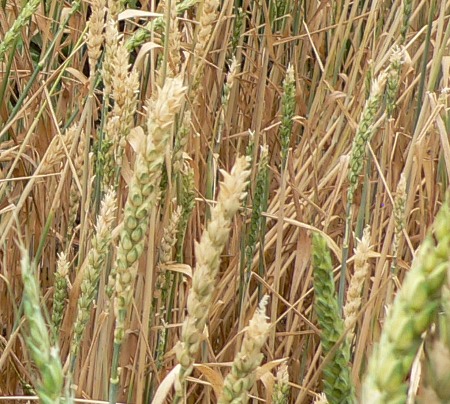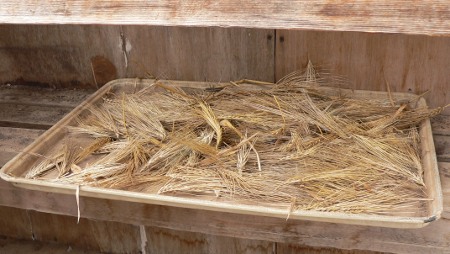
Wheat is the world’s most important grain crop, and approximately 70% of all agricultural land is planted to wheat, more than any other crop. For generations people have been sustained by this important food staple. However, recent research has raised questions about the possible detrimental health effects of wheat, most notably gluten intolerance, allergies and celiac disease. Increasingly, it seems a greater percentage of the population is suffering from these maladies, more than has historically been seen before. Since people have been consuming wheat in some form for millennia, researchers have begun to question the recent increase in these health issues. Some research has pointed to modern varieties of wheat that have been genetically selected and adapted for high yield and high gluten (protein) content. For centuries, farmers have been selecting plant varieties for better quality and yield, however continual selection for yield over other traits can lead to the loss of beneficial nutritional qualities. Wheat that has been bred for higher gluten content allows large, industrial baking operations to produce more bread per day per oven because the higher gluten content will cause the bread to rise more quickly. However, some dietitians and nutritionists believe that longer rise times as well as fermentation (sourdough) and pre-sprouting can develop more flavor and enzymatic activity which aids digestion and assimilation. Many older varieties of wheat require this slower artisan process in order to produce quality bread.

In addition, most modern wheat has been bred to grow shorter so that large combines do not have to deal with as much straw during the harvest. However, small-scale horse farmers prefer the taller varieties because they are more easily harvested by horse-drawn grain binders. Also, straw is a valuable commodity on a sustainable farm, serving as mulch, compost material (carbon source) and animal bedding.

This past year the research farmers at The Ploughshare searched and found several old varieties of wheat and are now growing them here on our research farm in order to determine which varieties perform best in our climate and soils. For the past 16 years we have grown and saved seed from Russian Beardless Wheat, an heirloom variety that has been a consistent performer. We are using this wheat variety as our control variety to measure and compare to the wheat varieties in the trial.
For more information on the varieties used, see: Ancient and Heirloom Wheat Trial Varieties
In addition to the wheat trial, we have several other agricultural projects underway.

WOW! Very interesting about the wheat. I buy my flour there for my bread.
I am doing some research for an organic farm in Missouri that is growing some heirloom wheat seeds, 10 different varieties and I was wondering what varieties you were growing in this project?
The varieties that we’re using in the trial are: Early Stone Age, Emmer, Pacific Bluestem, Japhet, Mirabella, Milagre, Globe, Sin El Pheel, Mauri, Kamut, Red Fife, Turkey Red and Russian Beardless. Next week, we plan to post an article on the blog with more detail about each variety.
Very interesting. Looking forward to more on this.
Ed, we also recently posted an article which goes into more detail on the varieties used in our wheat trial:
Ancient and Heirloom Wheat Trial Varieties